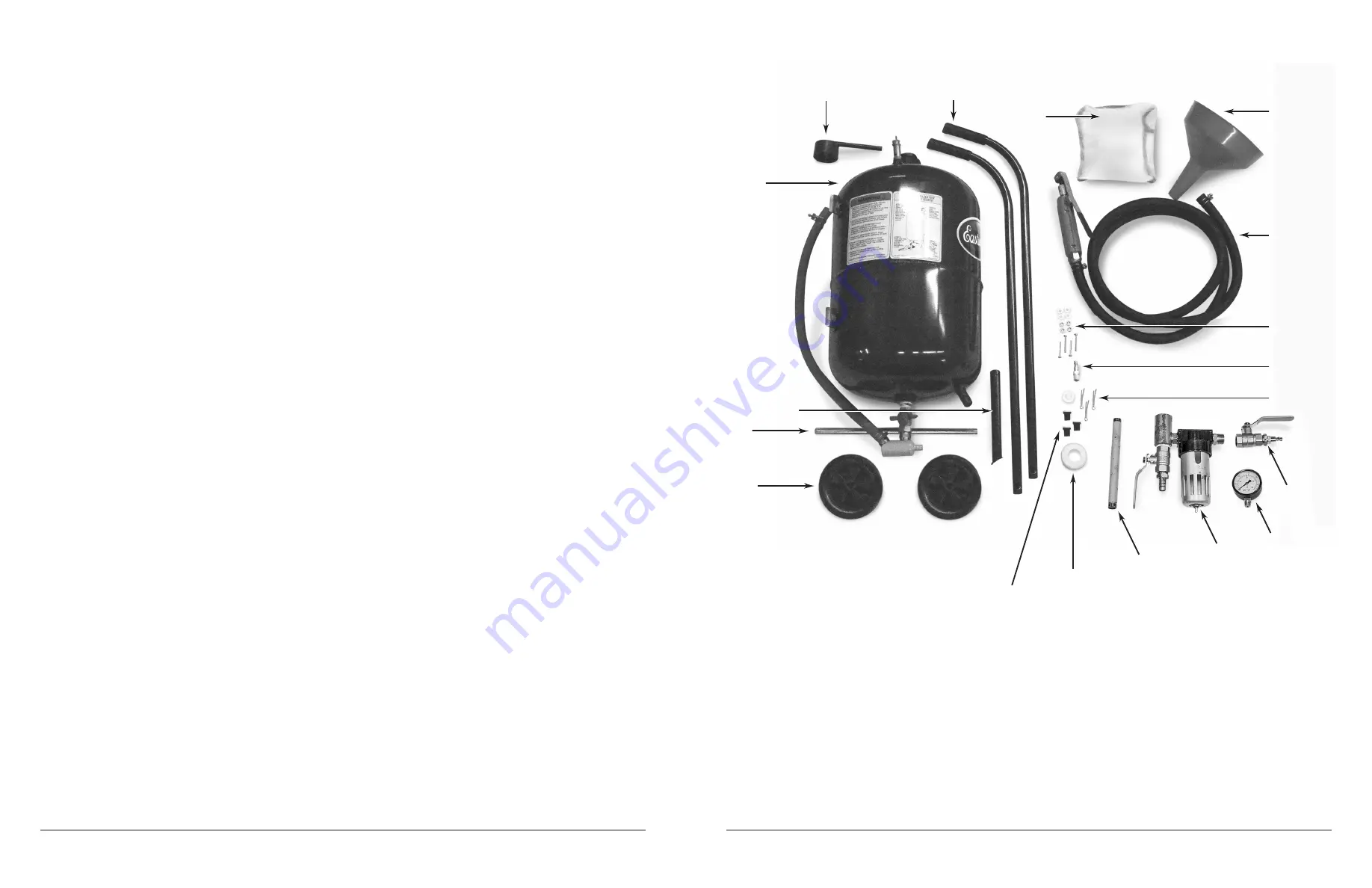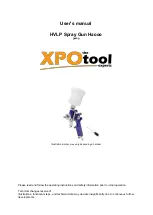
12
Eastwood Technical Assistance: 800.544.5118 >> techelp@eastwood.com
To order parts and supplies: 800.345.1178 >> eastwood.com
5
MAINTENANCE
1.
Drain water trap frequently during use. Do not allow moisture to fill more than 1/2 the water trap bowl. Do not leave water
standing in water trap when done blasting.
2.
Keep your Eastwood Abrasive Blaster clean, and protect it from damage.
3.
Release pressure from the tank after each use.
4.
When initially pressurizing, check for leaks at the tank top and at all hoses and fittings.
5.
Leaking joints may be repaired by replacing worn or damaged parts and using Teflon tape at joints.
6.
Check for worn abrasive hose and fittings. The Abrasive Control Valve, Abrasive Manifold, and all related parts after the abrasive
flows from the tank are subject to rapid wear due to the flow of abrasive.
7.
Watch especially for leaks, blistering, bulging or thinness of the hose. Replace any parts which appear worn.
TROUBLESHOOTING
1.
The most frequent cause of poor Abrasive Blaster performance is improper set-up or “tuning” of the Abrasive Flow and
Throttling Valves.
The Abrasive Flow is a finely tuned combination of two adjustments (Throttling Valve and Abrasive Control Valve) which will vary
widely with different media, air supply and atmospheric conditions.
It is necessary to follow this “tuning” procedure at the beginning of every blasting job.
NOTE:
Operating the blaster with all valves wide open will result in decreased performance and effectiveness.
Too much air flow/not enough media will result in a high velocity but ineffective stream.
Too much media/not enough air flow will result in a soft, weak blast stream.
To “tune” the flow:
a.
Adjust air pressure with the Throttling Valve. The Throttling Valve controls the velocity of material flow.
b.
Adjust abrasive flow with Abrasive Control Valve. The Abrasive Control Valve controls the amount of abrasive introduced
into the stream.
c.
Increase Throttling Valve first in small increments followed by the Abrasive Control Valve second until an ideal smooth,
forceful flow is achieved.
d.
The above steps may need to be repeated in sequence until an ideal balance can be reached.
Fill Cap with Seal Ring
✓
Tank
Assembly
✓
Funnel
Blast Hood
✓
✓
Blast Hose
and Safety
Valve/Nozzle
Assembly
✓
Hardware
✓
1/4" NPT
Quick Fitting
Cotter Pins
Air Inlet Valve
Wheels
Front
Support Leg
Handle Bars
✓
✓
✓
✓
✓
✓
Nozzles
Pipe Thread Tape
✓
Axle
✓
✓
Pressure
Gauge
✓
Inlet Manifold/
Moisture
Separator
Assembly
✓
Air Inlet Tube
✓


































